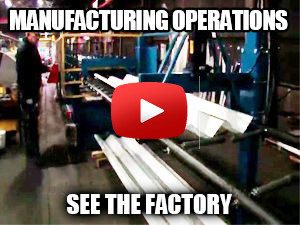Just like humans require healthy food for their existence, animals also require food to sustain their lives. The type of food needed by different animals is directly dependent upon their biological needs, structure, and the temperature of their habitat, energy, and nutrients they require. Animals like horses, rabbits, cows, goats, sheep, and other grazing animals feed on Hay.
About Hay

In agriculture, Hay is nothing but dried grass or legumes and other foliage that is used as animal fodder. Hay is generally used for grazing animals and sometimes for domesticated animals such as guinea pigs and rabbits. Timothy, clover, and alfalfa are some typical crops that are used as Hay. The seed material and leaf determines the quality of Hay. This is because of the leaf which posses a much higher nutrition value for animals than stems. Harvesting hay is a thorough process. The best time to harvest hay is when the head of the seed is not ripened and the leaf is in full bloom.
Hay is left to dry out so that the moisture is eliminated from the bulk. Therefore, the method of transporting and making Hay aims at reducing the shattering and falling of the leaves during handling.
Learn More: Hay Storage
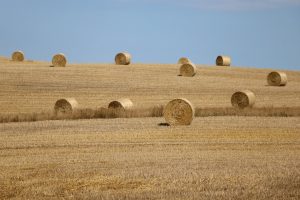
Storing Hay is a robust process because Hay is a very sensitive fodder. It is susceptible to weather and transport conditions. Especially the weather and climatic conditions play a huge role in handling Hay. With a season of drought, the seeds and leaves of Hay get stunted. Hay that has a high level of dry stems will give a low nutrition value to the animals. Whereas, if the climatic conditions stand to be too wet, Hay may get spoil even before it is transported or fed to the animals. Thus, one of the biggest challenges for Hay is proper storage.
The quality of Hay is affected by temperature, time, and moisture. The bacteria and other insects that flourish under moist and warm conditions consume the essential nutrients that are present in Hay. Severe weather conditions and rodents can also destroy the quality of Hay. Baling plays an important role in hay storage. It can be done in various forms and sizes, such as round baling, square baling, and curved baling, etc. Before discussing further what kind of baling is appropriate, let’s talk about what baling is?
Baling
Baling is the process of compressing raked and cut Hay into compact bales. These bales are easy to transport, handle and store. Baling is done to preserve the nutritional value of the Hay. Baling is done with the help of equipment known as a baler. Baling the Hay can be done in different shapes and sizes, such as cylindrical, square, round, curved, etc. The high quality of baling ensures the quality of Hay as well. Now let’s discuss some baling techniques to understand better which one maintains the best quality of Hay.
Square Bales of Hay
Square bales of Hay are the most common form of the bale. They are easy to handle and convenient in size. Baling hay into square bales is a labor-intensive and time-consuming task.
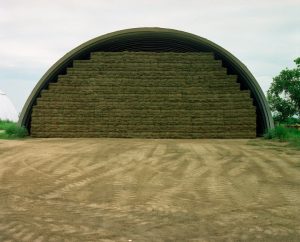
There are small square bales as well, which are traditionally about 3 feet long and 18 inches wide and 1 foot tall. Their weight can range from 36 to 71 lbs, with an average weight of 50 lbs. Due to the labor cost, these square bales are generally stored indoor. The flat surface of square bales can easily absorb water if they are left uncovered, which is enough for deteriorating the quality of Hay. If square bales are stored inside the hay storage buildings, then the quality of Hay remains stable and full of nutrition for an extended period of time. As far as the handling of a bale is concerned, the small square bales have an advantage. Hay feeders are required to use with square bales to avoid losses during feeding.
Round or Circular Bales of Hay
Baling can be an expensive task. But making round bales involves less time and fuel. Round bales are economical than the square bales. Round bales can be sized between 4 to 6 feet wide and they weigh between a few pounds to a ton. The weight of bale also depends upon the crop that is used to make the Hay.
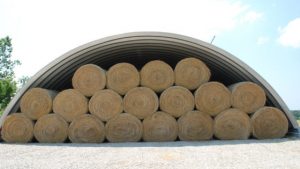
Round or circular bales are generally stored outdoors. Storing bales outdoors can majorly reduce the quality of Hay. Moisture present outdoor allows fungus and bacteria to prosper, which wrecks the quality of Hay. That is why it is important to store your hay inside a sealed and sound steel structure. Round bales can be moved with the help of tractor or other such machinery.
Each type of bale has its advantages and disadvantages, but when it comes to protecting your investments there is only one solution, high-quality hay storage buildings by Curvco.
Hay storage buildings
Storing and keeping Hay in a permanent shelter is an excellent option. This is because a one-time investment will make sure that the hay is not getting destroyed by any harsh weather conditions. Proper ventilation can be installed by using our turbine vents which will effectively circulate and protect the commodities inside your building.
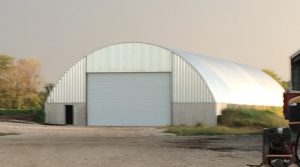
Curvco hay storage buildings are most popular for protecting hay by providing superior coverage. Our buildings are not only economical to use but they are also recognized universally by the farming and agricultural communities. By using a steel farm building by Curvco, you can continue to produce and ship exceptional quality hay. With the overall goal being to prevent the destruction of the crop by mold, insects, and rodents.
Based on your needs for bale storage, we can provide many options to ensure the profitability of your farm. This is one of the most affordable and practical solutions for hay storage buildings because you can build the structure yourself making this do-it-yourself project budget-friendly.
There are no trusses, beams, or posts; therefore, the bales can be stacked without any obstruction or resistance. Covered in a high-quality coating of galvalume, hay storage buildings are engineered and warranty backed for rust and corrosion by the US Steel Mill.
We hope you learned more about hay storage and some reasons to use Curvco hay storage buildings. Without any delays, contact one of our building specialists below!Call Us 1-800-748-7188Get a FREE price quote


